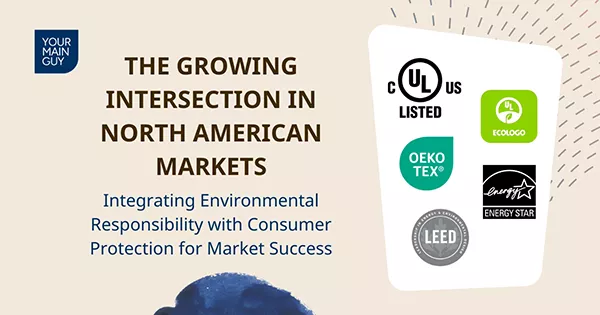How Recent Changes in US Consumer Product Safety Laws Affect Manufacturers
Recent CPSIA amendments tighten product safety for manufacturers. Key changes include enhanced testing, stricter limits on harmful substances, and new documentation.
What Are the Latest Updates to the Consumer Product Safety Improvement Act?
The Consumer Product Safety Improvement Act (CPSIA) continues to evolve, with recent amendments bringing significant changes to how manufacturers must approach product safety. The latest updates focus on strengthening consumer protection while streamlining compliance processes for manufacturers.
Key changes include enhanced testing requirements for children's products, stricter limits on harmful substances, and new documentation requirements for supply chain verification. The Consumer Product Safety Commission (CPSC) has implemented a phased approach, with most provisions taking effect over the next 18 months to allow manufacturers time to adapt their processes.
One of the most notable changes is the expansion of the public safety database, which now requires manufacturers to report potential hazards more promptly and comprehensively. This change aims to improve transparency and quick identification of safety concerns before they become widespread issues.
How Do These Changes Impact Product Testing Requirements?
The new testing protocols represent some of the most significant changes for manufacturers. Products now require more frequent testing, with specific emphasis on components that could pose safety risks. Third-party testing requirements have been expanded, and manufacturers must now use CPSC-accredited laboratories for a broader range of products.
For ongoing production testing, manufacturers must now:
- Conduct component testing at least once every 12 months
- Implement random sample testing from production lines
- Maintain detailed testing records for at least five years
- Establish clear protocols for test failure responses
The cost implications of these enhanced testing requirements vary by industry and product type. While larger manufacturers may absorb these costs more easily, smaller companies might face significant challenges. The CPSC estimates that comprehensive testing programs could increase product testing costs by 20-30% for many manufacturers.
Documentation requirements have also become more stringent. Manufacturers must maintain detailed records of:
- Test results and methodologies
- Component sourcing information
- Quality control procedures
- Supply chain verification documents
Which Industries Face the Most Significant Adjustments?
Different industries face varying levels of impact from these regulatory changes. Here's how specific sectors are affected:
Children's Products and Toys:
- Stricter lead content limits in accessible parts
- Enhanced testing for phthalates and other chemicals
- More frequent testing requirements for small parts
- Additional labeling requirements for age-appropriate use
Electronics and Appliances:
- New electromagnetic compatibility testing requirements
- Enhanced fire safety standards
- Updated energy efficiency compliance documentation
- Stricter requirements for battery-operated devices
Textiles and Apparel:
- Expanded flammability testing requirements
- New chemical content restrictions
- Enhanced labeling requirements for children's sleepwear
- Additional documentation for fabric sourcing
Furniture and Home Goods:
- Updated stability testing requirements
- Stricter standards for finish and coating materials
- New requirements for assembly instructions
- Enhanced documentation for material sources
What Are the New Compliance Requirements for Children's Products?
Children's products continue to receive the highest level of regulatory scrutiny. The updated requirements include more stringent standards across several areas:
Lead Content Restrictions: The acceptable lead content in accessible parts has been further reduced to 90 parts per million (ppm), down from the previous 100 ppm. This affects everything from surface coatings to internal components that could become accessible through normal use or damage.
Phthalate Regulations: The list of prohibited phthalates has expanded, and testing requirements now cover more product categories. Manufacturers must ensure that:
- No prohibited phthalates are present above 0.1%
- Alternative plasticizers meet safety requirements
- Regular testing verifies ongoing compliance
Tracking Label Requirements: New tracking label requirements mandate more detailed information, including:
- Date and location of manufacture
- Batch or lot numbers
- Detailed manufacturing information
- Age grading information when applicable
How Can Manufacturers Adapt Their Quality Control Systems?
Successfully adapting to these changes requires a systematic approach to quality control. Manufacturers should focus on several key areas:
Updating Quality Management Systems:
- Implement new testing protocols
- Update documentation procedures
- Enhance tracking systems
- Improve supplier verification processes
Employee Training Requirements:
- Conduct regular safety compliance training
- Document training procedures and attendance
- Verify understanding of new requirements
- Maintain updated training materials
Documentation Procedures:
- Create comprehensive testing logs
- Maintain detailed supplier records
- Document corrective actions
- Keep thorough training records
Supply Chain Verification:
- Implement supplier qualification procedures
- Conduct regular supplier audits
- Maintain material certification records
- Document chain of custody
What Are the Penalties for Non-Compliance?
The CPSC has significantly increased penalties for non-compliance with these new requirements. Companies found in violation may face:
Civil Penalties:
- Up to $100,000 per individual violation
- Maximum of $15 million for a related series of violations
- Mandatory recall costs
- Reputation damage and loss of market share
Criminal Penalties: In cases of willful violation, criminal penalties may include:
- Corporate fines up to $500,000
- Individual fines up to $250,000
- Potential imprisonment for responsible individuals
- Permanent injunctions against future violations
Moving forward, manufacturers must prioritize compliance with these updated regulations. Success requires a comprehensive approach that includes:
- Regular review of compliance programs
- Proactive testing and documentation
- Strong supplier relationships
- Ongoing employee training
By understanding and implementing these changes effectively, manufacturers can maintain compliance while continuing to produce safe, high-quality products for consumers. The investment in compliance now can prevent costly penalties and protect brand reputation in the future.
Manufacturers should consult with legal experts and industry specialists to ensure their compliance programs fully address all new requirements. Regular audits and updates to quality control systems will help ensure ongoing compliance with these evolving regulations.




